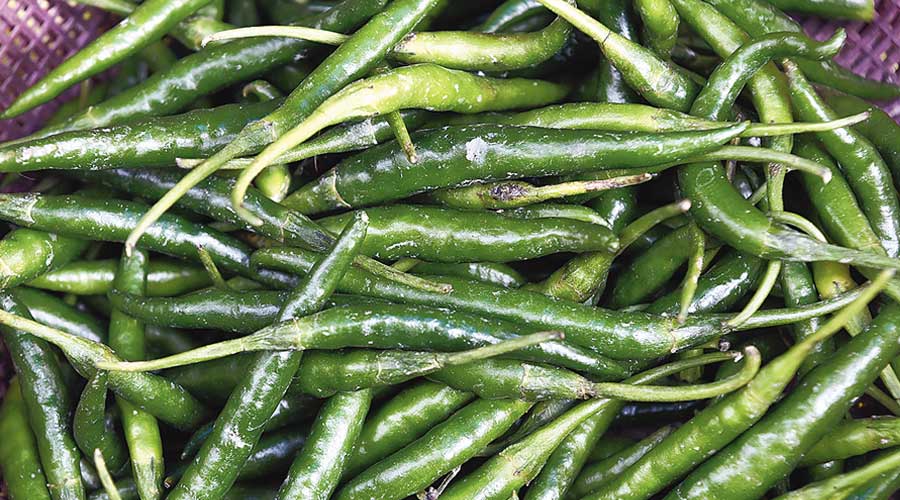A shortfall in Bengal’s own production, coupled with poor supply from other states, has resulted in a sharp spike in the price of green chillies in Kolkata.
On Friday, green chillies sold between Rs 120 and Rs 150 a kilo in retail markets in the city, up from Rs 100 to Rs 120 a kilo a few days back.
Bengal produces around 9.5 lakh to 10 lakh tonnes of green chillies a year, compared with its annual demand of eight lakh tonnes. It remains one of the biggest suppliers of the crop to other states.
This year the production has taken a hit in South 24-Parganas, North 24-Parganas, Murshidabad and Hooghly districts — which are primary suppliers of green chillies to Kolkata — because of weather. Flowers have either not blossomed or the yield has been delayed.
“Rain has defied all patterns this year. There were heavy showers even in November and rain continued in short spells right into February,” said Pradip Kumar Mazumder, adviser to chief minister Mamata Banerjee on agriculture.
“As a result, production was severely hit in a number of districts. In many pockets, plants wilted because of waterlogging. The double blow has created a shortfall in supply despite Bengal being a supplier of green chillies to other states.”
Supplies from Bihar and Jharkhand could have made up for the deficit in Bengal but traders said rain in these two states have hit the flow.
Multiple spells of rain in January and February have dealt a severe blow to producers from these states, wholesalers in Kolkata said.
“Earlier, Koley Market in Sealdah would receive around 10 truckloads of green chillies from areas around Ranchi, each carrying around 10 tonnes, every two days. Now that has come down to just about five truckloads,” said Kamal Dey, president of the All Bengal Grocers and Vendors’ Association. “So one can understand the shortfall in supply.”
With supplies hit and prices going up, retail markets are struggling to keep prices under check. As average consumption takes a dip, the percentage of wastage starts to rise.
“Green chillies are one of the most perishable of all agricultural produce. The temperature inside a sack of green chillies keeps rising and so does the percentage of wastage,” said Srikant Prasad, a wholesale trader of green chillies in Koley Market.
